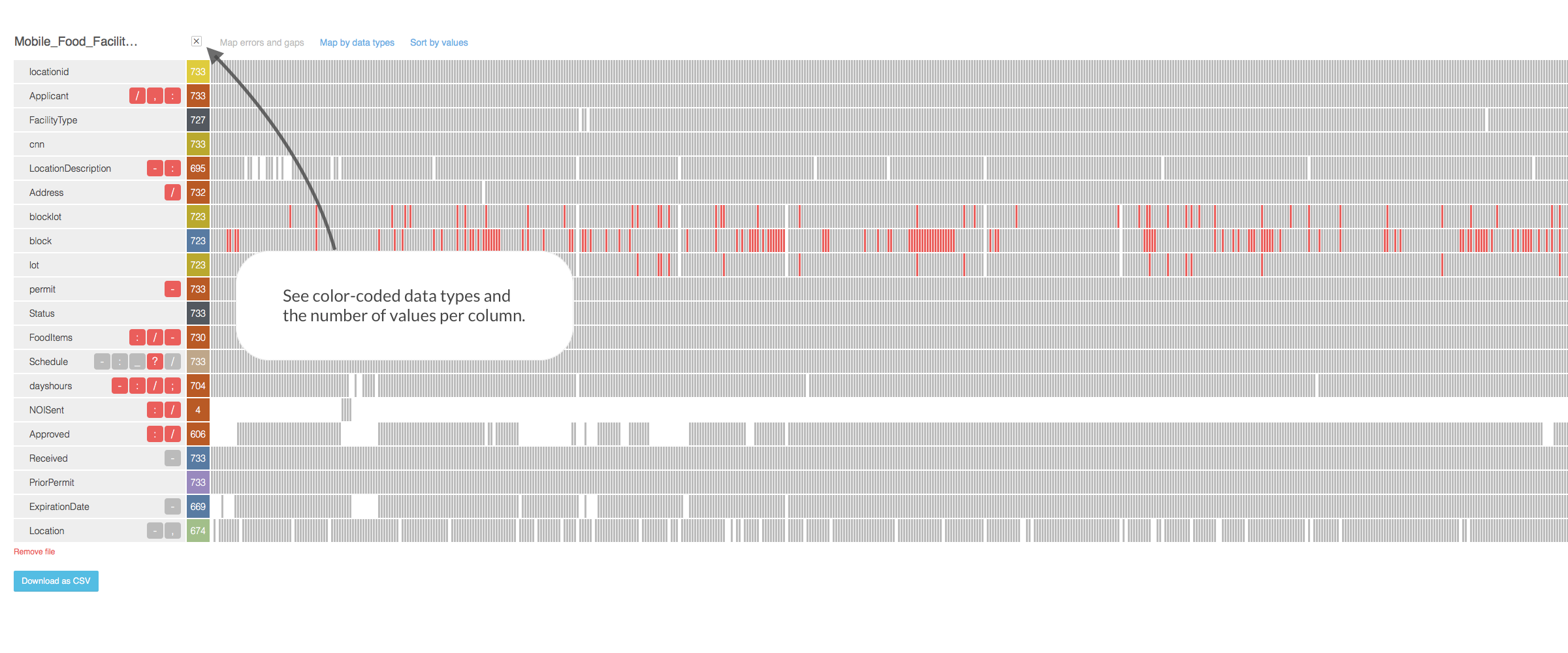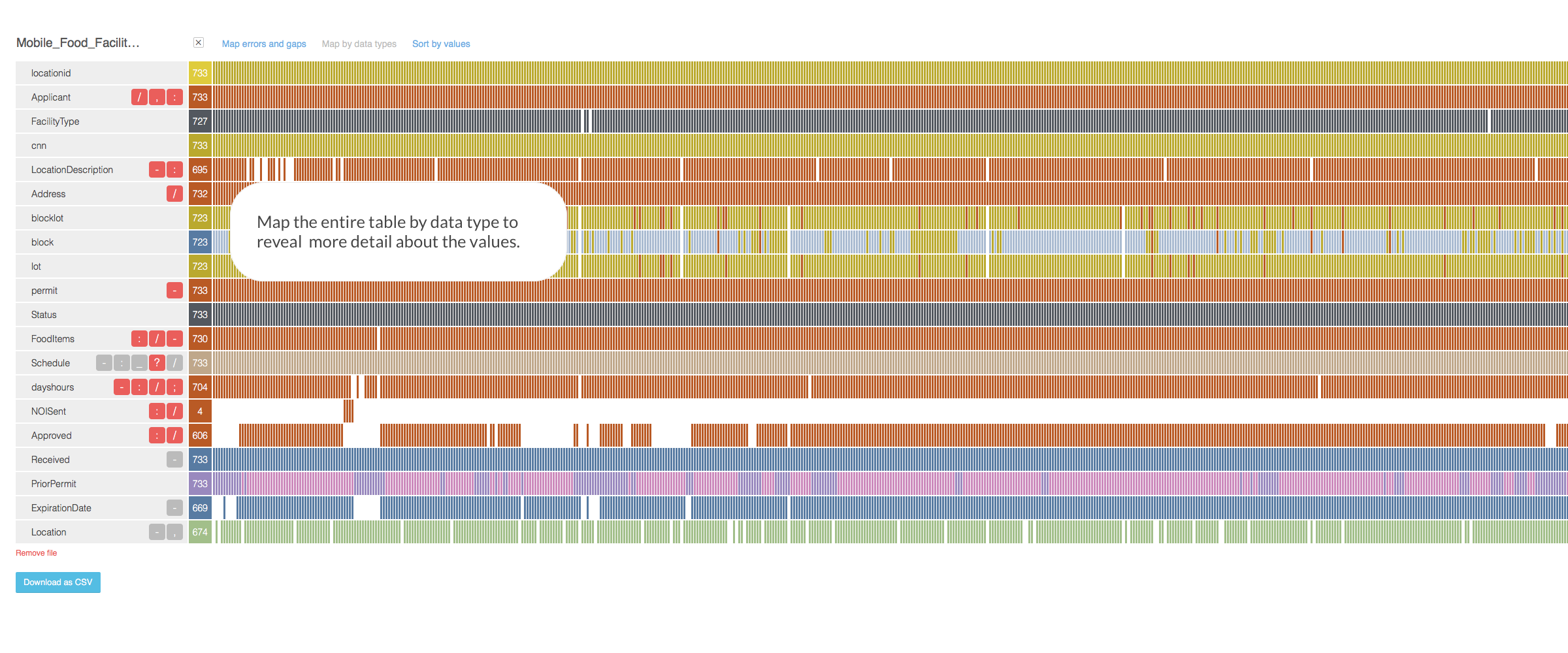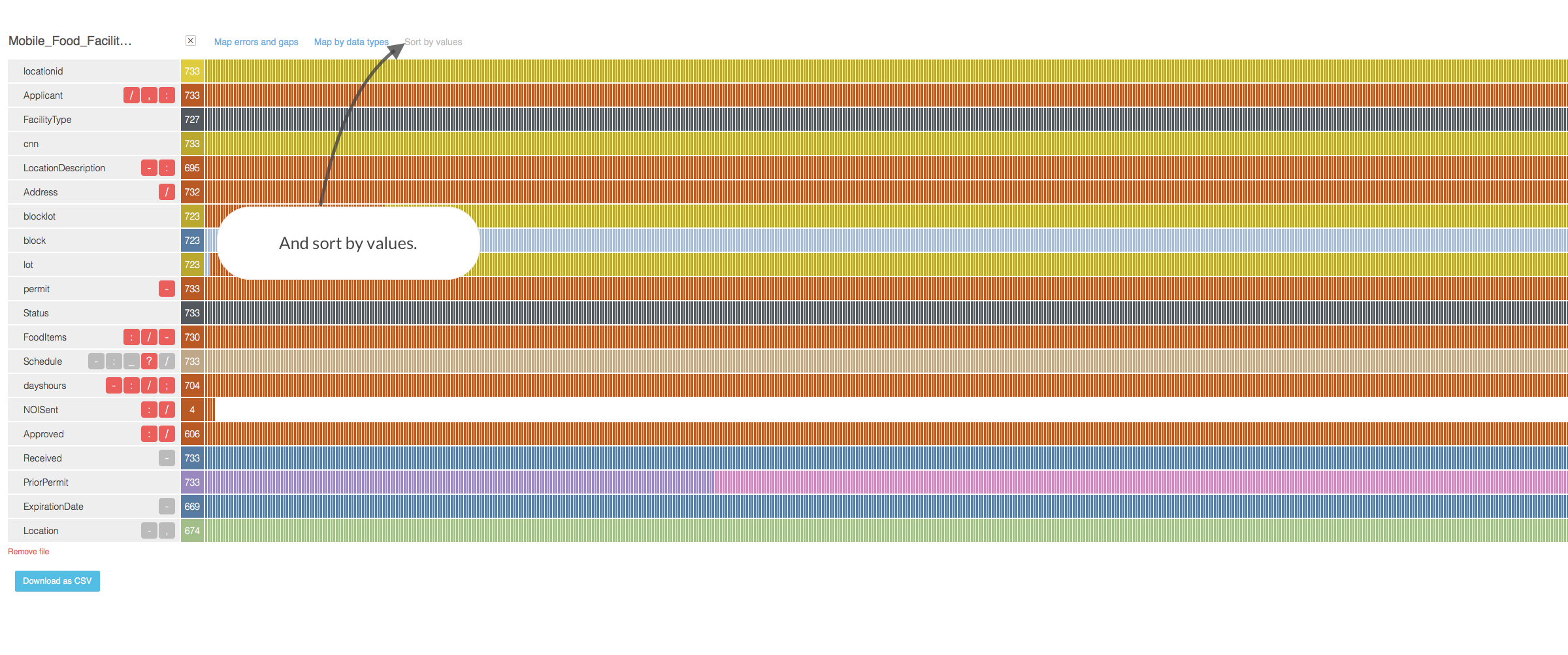Why Breve?
We designed Breve for researchers who have to work with very incomplete and messy data. Historical data is often full of inconsistencies and errors that can be difficult to see when scrolling through a spreadsheet. We were inspired by Victor Powell's CSV fingerprint which he describes as a "birdseye view of the file without too much distracting detail". Breve gives you that meta view of tabular data and also lets you drill down to records and columns, and edit values.
At the beginning of a research project and at points along the way, it is helpful to be able to see what you have to work with — all at once—. Ben Fry's Preservation of Favoured Traces originally built in Processing (and now available in print!) elegantly reveals deletions and additions in the seven editions of Darwin's On the Origin of Species. Since humanities data is significantly shaped and enriched during the research process, we wanted to make the evolution of a constructed data set clearly visible to the author.






